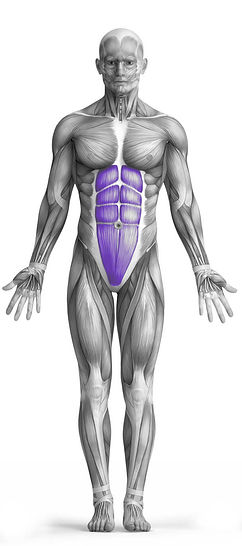Seated Leg Tuck With Dumbbell 101 Video Tutorial
0

Exercise Synopsis
Target Muscle Group
Abs
Secondary Targets
None
Execution
Compound
Force Type
Pull
Required Equipment
Dumbbell
Fitness Level
Intermediate
Variations
None
Alternatives
Timer
Hour
Minute
Second
Stopwatch
00:00:00:00
Overview
The Seated Leg Tuck with Dumbbell is a dynamic abdominal exercise specifically targeting the rectus abdominis. In this exercise, individuals sit on the edge of a bench or chair, grasping a dumbbell between their feet while keeping the legs extended. With controlled movements, they then lift their knees towards the chest, contracting the abdominal muscles to bring the dumbbell towards the torso. This exercise effectively isolates the abs, promoting strength and muscle growth in the core region. The added resistance from the dumbbell increases the challenge, making it a valuable exercise for building core strength and definition. As there are no secondary targets, the focus remains solely on engaging and strengthening the abdominal muscles.
How to Perform
Begin the Seated Leg Tuck with Dumbbell by securing a flat bench and positioning yourself at one end, ensuring your buttocks are approximately one foot from the edge for optimal range of motion.
Grasp the sides of the bench beside your hips to stabilize your body throughout the exercise, maintaining balance and control.
Keep your knees and feet together as you slowly recline on the bench, extending your body until you are nearly straight, with slight bending of the knees and your shoulder blades lifted off the bench.
Initiate the movement by simultaneously bringing your knees towards your chest while lifting your torso upward, aiming to touch your knees with your chest at the peak of the contraction.
Maintain tension in the abdominal muscles as you carefully extend your body back to the starting position, controlling the descent to maximize muscle engagement.
Repeat the exercise for the desired number of repetitions, focusing on controlled movements and proper form to effectively target the abs and enhance core strength. This exercise offers a comprehensive workout for both the lower and upper abdominal muscles, providing a valuable addition to any core-focused routine.
★ Bonus: For exercises that involve external weights (such as dumbbells, barbells, or machines), the One Rep Max (1RM) calculator can help you estimate your maximum lifting capacity. Use it to track your strength progress and adjust your training for optimal results.
Tips
Execute the Seated Leg Tuck with deliberate slowness to maximize its effectiveness in engaging the abdominal muscles.
For increased challenge and intensity, consider incorporating a dumbbell into the exercise by gripping it securely between your feet, adding resistance to further engage the abs and enhance muscle activation.
How Not to Perform
Avoid using momentum to swing the legs during the Seated Leg Tuck with Dumbbell, as this diminishes the effectiveness of the exercise and places strain on other muscle groups. Focus on controlled movements and engage the abs to lift the legs rather than relying on momentum.
Do not arch the back excessively during the exercise, as this can strain the lower back and reduce the engagement of the abdominal muscles. Maintain a neutral spine position throughout the movement, ensuring the focus remains on the abs.
Refrain from gripping the dumbbell between the feet too tightly, as this may cause discomfort and detract from proper form. Instead, hold the dumbbell securely with a moderate grip to avoid unnecessary strain on the feet and ankles.
Avoid allowing the legs to drop too low during the lowering phase of the exercise, as this can strain the hip flexors and decrease the effectiveness of the movement. Control the descent of the legs to maintain tension on the abs and prevent excessive strain on other muscle groups.
Do not hold your breath while performing the Seated Leg Tuck with Dumbbell, as this can decrease oxygen flow and hinder performance. Remember to breathe evenly and rhythmically throughout the exercise to optimize energy levels and muscle function.
Avoid rushing through the repetitions, as this can compromise form and reduce the effectiveness of the exercise. Focus on quality over quantity, performing each repetition with proper technique and control to maximize the benefits for the abs.
Do not neglect proper posture and alignment throughout the exercise. Keep the spine straight, shoulders relaxed, and chest lifted to maintain stability and ensure proper muscle engagement in the abs.
Variations
Variations of fitness exercises refer to different ways of performing a specific exercise or movement to target various muscle groups, intensities, or goals. These variations aim to challenge the body differently, prevent plateaus, and cater to individuals with varying fitness levels.
Alternatives
Alternative exercises in fitness refer to different movements or activities that target similar muscle groups or serve the same training purpose as the primary exercise. These alternative exercises can be used as substitutes when the original exercise is unavailable or challenging to perform due to various reasons such as equipment limitations, injuries, or personal preferences.








